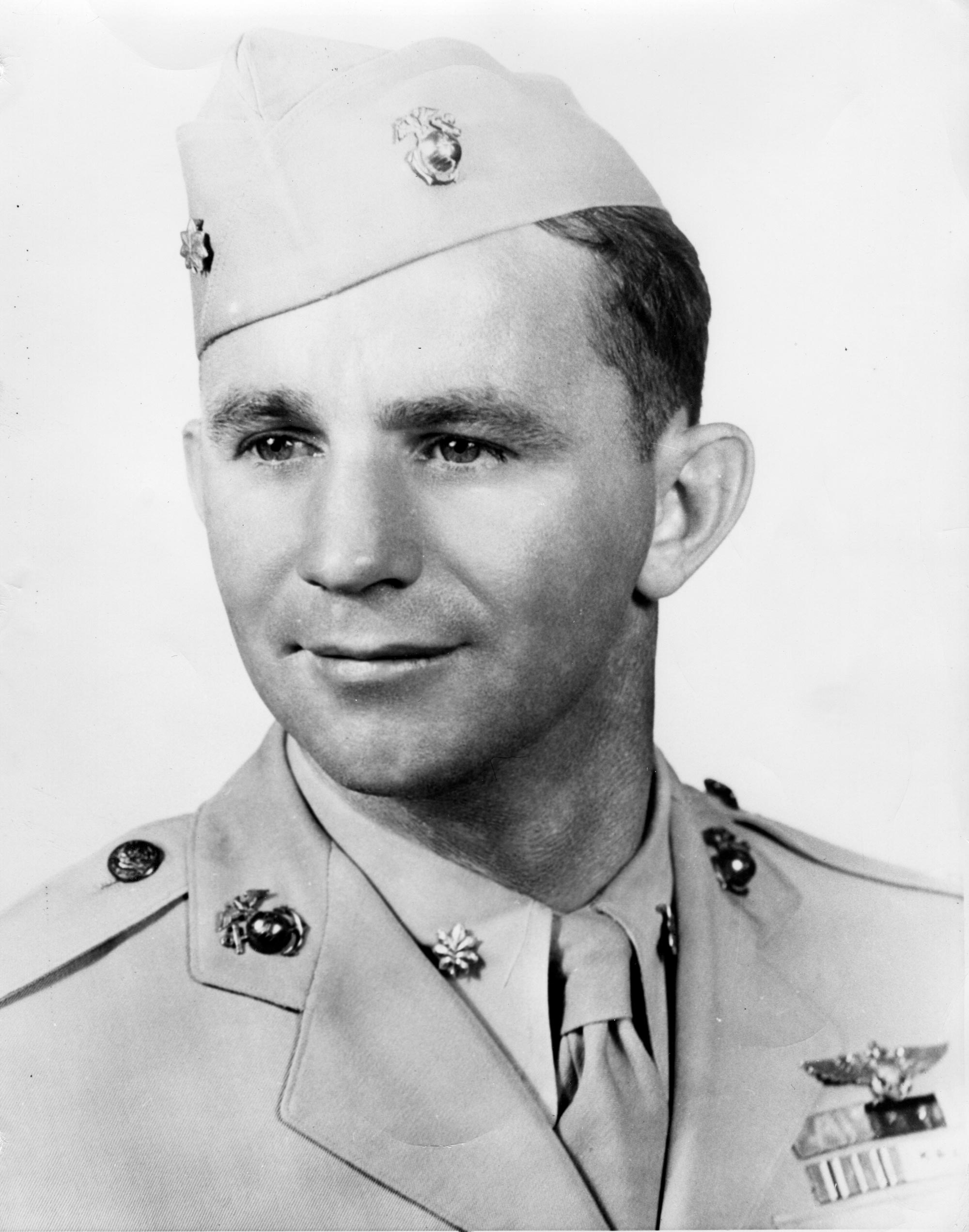
More than an honorable man More than an honorable man More than an honorable man
Twenty years ago, we lost Robert Edward Galer, a Seattle native who earned a UW degree in commercial engineering—and received the Medal of Honor in World War II.
By Jon Marmor | June 2025 issue
The next time you are in Austin, Texas, be sure to head about a mile east of the Texas Capitol and stop by the lush, 22-acre Texas State Cemetery. There, on Monument Hill, Section 1, Row B, Number 13, you will find the grave of Robert Edward Galer. He graduated from the UW in 1935 with a degree in commercial engineering. He also received the Medal of Honor.
And if you are on the UW Seattle campus, you must drop by the Medal of Honor memorial at the south end of Memorial Way. There, you will see Galer’s name on the granite memorial honoring seven other alumni who received our country’s most prestigious military honor: Gregory Boyington, Deming Bronson, Bruce Crandall, John “Bud” Hawk, Robert Leisy, William Nakamura and Archie Van Winkle.
Shortly after graduating from the UW, Galer enlisted in the Navy. After attending flight training at Naval Reserve Aviation Base Seattle, he was assigned to Ewa Airfield on Oahu. He was only seven miles from Pearl Harbor when it was attacked on Dec. 7, 1941. Several months later, Galer was at the controls of a F4F Wildcat fighter plane, screaming through the skies north of Guadalcanal, hunting down a fleet of Japanese bombers and fighters. Talk about sudden impact: in his first flight, he downed two aircraft, one bomber and one Zero fighter.
That auspicious start foretold what was to come. Galer, a Seattle native, was credited with 13 aerial victories and four probable victories in the Pacific Theater. He received the Medal of Honor for leading a Marine Fighting Squadron in aerial combat with enemy Japanese forces in the Solomon Islands area in August and September 1942. His Medal of Honor citation says: “Leading his squadron repeatedly in daring and aggressive raids against Japanese aerial forces, vastly superior in numbers, Major Galer availed himself of every favorable attack opportunity, individually shooting down 11 enemy bomber and fighter aircraft over a period of 29 days. Though suffering the extreme physical strain attendant upon protracted fighter operations at an altitude above 25,000 feet, the squadron, under his zealous and inspiring leadership, shot down a total of 27 Japanese planes. His superb airmanship, his outstanding skill and personal valor reflect great credit upon Major Galer’s gallant fighting spirit and upon United States Naval Forces.” President Franklin D. Roosevelt presented him with the Medal of Honor at a White House ceremony on March 24, 1943.
“Major Galer availed himself of every favorable attack opportunity, individually shooting down 11 enemy bomber and fighter aircraft over a period of 29 days.”
Medal of Honor citation
But that was not the end of Galer’s military career. He went on to hold high-ranking positions beyond the end of World War II, ultimately being named Assistant Chief of Plans on the staff of the commander of the U.S. Air Force Pacific Fleet.
He saw more combat during the Korean War, leading Marine attack aircraft against a heavily defended industrial area in North Korea. He received the Legion of Merit with Combat “V” for his service. In 1952, he was shot down behind enemy lines but was later rescued by helicopter.

Exposure to danger didn’t end in World War II, as Galer returned to combat in the Korean War and was shot down behind enemy lines. He was rescued and spent time in a hospital. Photo courtesy of U.S. Naval Institute.
He required hospitalization but returned to duty in late 1952 in California, became assistant director of the guided missiles division of the Navy’s Bureau of Aeronautics, and later became acting director. He also was awarded a master’s degree from George Washington University. His final assignment was assistant director, Guided Missiles Division, Bureau of Aeronautics. He was promoted to the rank of Brigadier General when he retired in 1957.
His list of awards is more than impressive, but it does not communicate the danger he put himself in to serve his country. Reading his story on numerous websites, your heart will start pounding and your throat will tighten as you learn what this fearless University of Washington graduate experienced.
Twenty years ago, on June 27, 2005, Galer died at the age of 91 in Dallas, Texas. He deserves to be remembered for the incredible courage and bravery he exhibited all those years ago. Be sure to stop by the Medal of Honor memorial on the UW Seattle campus and pay tribute to a hero.